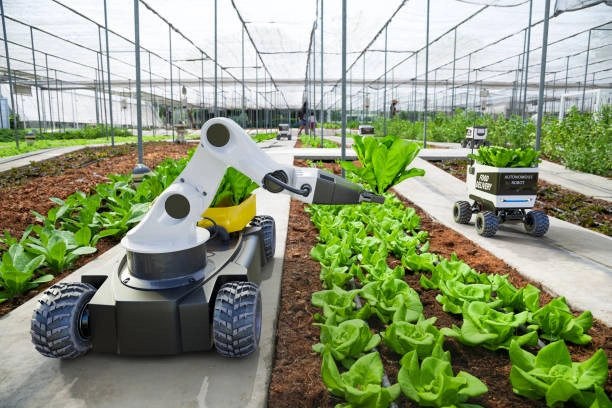The development of American agriculture is a history of continuous transformation and innovation. From early manual labor to today’s high-tech applications, advancements in agricultural technology have driven significant progress across the industry. Today, American agriculture is at the forefront of technological innovation, constantly exploring more efficient and sustainable production methods.
Precision Agriculture: A New Era of Efficient Farming
Precision agriculture is one of the core technologies of modern American farming. By utilizing advanced technologies, farmers can manage their fields with exceptional accuracy. They can monitor soil moisture, nutrient levels, and crop growth conditions in real time, enabling precise fertilization, irrigation, and pest control.
This precise management approach not only boosts crop yields but also minimizes resource waste. By making data-driven decisions tailored to specific field conditions, precision agriculture plays a crucial role in promoting sustainable farming.
Genetically Modified Organisms (GMOs): Unlocking New Agricultural Opportunities
The introduction of genetically modified organisms (GMOs) has revolutionized American agriculture. These genetically enhanced crops offer greater resistance to pests, diseases, and harsh environmental conditions. Through scientific genetic modifications, GMO crops can maintain high yields while reducing pesticide use, all while improving nutritional value.
This technology not only lowers agricultural production costs but also contributes to global food security. The widespread adoption of GMOs has strengthened the global competitiveness of American agriculture and provided innovative solutions for challenges such as climate change.
Agricultural Robots: Enhancing Productivity
Agricultural robots are becoming indispensable assets on American farms. These intelligent machines can perform a wide range of farming tasks, from planting to harvesting. Automated tractors and harvesters operate with exceptional precision, significantly improving efficiency.
Additionally, drones equipped with cameras and sensors monitor crop growth from above, identifying potential issues early. The widespread use of agricultural robots not only reduces the physical labor burden on farmers but also enhances the accuracy and efficiency of farming operations, driving the modernization of agriculture.
Automated Irrigation Systems: Optimizing Water Resource Management
Automated irrigation systems are an essential component of modern American agriculture. These systems adjust water distribution based on soil moisture levels and crop needs, ensuring that every drop is used efficiently.
By precisely controlling irrigation schedules, these systems improve water-use efficiency while preventing soil erosion and nutrient loss caused by overwatering. As water resources become increasingly scarce, automated irrigation systems play a vital role in promoting sustainable agricultural practices, helping farmers conserve water while maximizing crop yields.
Remote Crop Monitoring with Sensors: Enabling Smart Farm Management
With the advancement of sensor technology, American farmers can now remotely monitor crop growth in real time. These sensors, installed in fields, collect and transmit data on soil conditions, climate, and plant health to farmers’ devices via the internet.
Farmers can access this data anytime and take timely actions to address potential issues. This remote monitoring system not only saves time and labor but also enhances the intelligence of farm management, enabling more scientific decision-making to ensure optimal crop growth.
Farm Management Software: Enhancing Decision-Making Efficiency
Farm management software provides American farmers with powerful decision-making tools. By integrating field data, weather forecasts, and market trends, these programs help farmers develop more efficient production plans and management strategies.
With real-time tracking of production costs, inventory, and sales, farmers can optimize resource allocation and maximize profitability. The widespread adoption of farm management software has made American agricultural management more scientific and precise, helping farmers stay competitive in an ever-changing market.
The Future of American Agriculture: Leading Global Agricultural Innovation
The continuous advancement of agricultural technology is reshaping the future of the industry. From precision agriculture and GMOs to agricultural robots, automated irrigation systems, remote monitoring, and farm management software, these innovations are enhancing productivity while laying a strong foundation for sustainable farming.
As technology continues to evolve, American agriculture will remain at the forefront of global agricultural transformation, making significant contributions to global food security and environmental sustainability.

